








The magazine of the photo-essay

March 2017 back issue

by Doug Menuez


“A free, really high quality photo-essay magazine. Fabulous!”
Stephen Fry. British actor, writer and film & documentary maker


Documenting Steve Jobs and the fearless innovators who built our world.
www.fearlessgenius.org
In 1985, I returned to San Francisco after covering the horrific famine and
conflict in Ethiopia and Eritrea for Newsweek and began looking for a more
positive story for the human race. I noticed that in nearby Silicon Valley an
explosion of innovation was fueling a digital revolution that might change all our
lives. Although I was not interested in technology per se, the people inventing
these new tools were an intriguing mystery.
That same year, Steve Jobs was forced out of Apple. He announced he was
starting a new company, NeXT, and building a supercomputer to transform
education. That got my attention. Education was critical to solving most social
issues and Steve had changed the world already, he might do it again. I’d found
my story. I reached out to him through friends and gained unprecedented access
to document him for LIFE Magazine as he and his team built the NeXT computer.
I ended up spending three years there.
Because Steve trusted me, so did the other leading innovators of Silicon Valley. I gained insider access to their secret
labs, boardrooms, offices and homes for fifteen years as they built the technology that shapes our world today. It was a
time of extreme sacrifice, struggle and sublime creativity and many paid a high price. There were divorces, ruined
careers, billions made and then lost in tragic failure. One engineer I knew shot himself, another was committed to the
psych ward and a manager went to prison for fraud.
Later, what Steve described as a “noble cause” shifted into an unsustainable gold rush to IPO’s during the dot-com
boom. When the inevitable bust came in 2000, it was devastating, washing away trillions of dollars, millions of jobs and
crashing the economy.
The people I photographed were on a mission. In the early days, money was secondary to inventing impossibly cool,
new technology that would improve our lives. Their idealism and passion combined with patient, long-term investors did
lead to lots of failures, but it also allowed staggering, unprecedented successes to flower.
And history mattered––Steve Jobs understood this and pumped the giants who’d built the Valley for all their knowledge,
which shaped his later success. Today’s entrepreneurs and innovators could surely benefit from the lessons within the
history of the digital revolution while we figure out how to catch the next wave to the next tech revolution. It’s coming
fast and bringing a massive range of astonishing new technologies with it––nanotech, genomics and biotech, robotics,
AI, quantum computing, 3-D printing, VR and more.
The original animating spirit of Silicon Valley is inspiring innovation and entrepreneurship worldwide. Meanwhile, in the
US our education system is failing to produce enough engineers and a broken immigration policy is keeping the
brightest technologists out of the country. It’s very possible the next wave will be caught first far from Silicon Valley.
Regardless, it’s going to dwarf the preceding revolution and bring implications for the human race we can only just
barely imagine now, including serious moral and ethical challenges. We really need to pay attention.
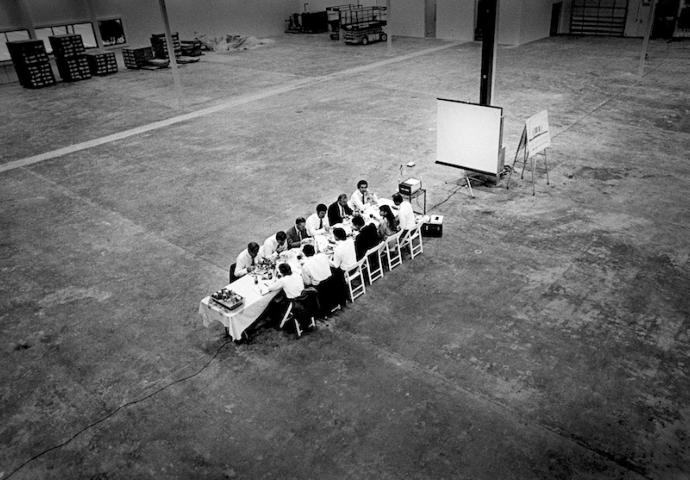
The Day Ross Perot Gave Steve Jobs $20 Million. Fremont, California, 1986.
Steve was a consummate showman who understood the power of a compelling setting. This was never more apparent than at
this incongruously formal lunch he hosted for Ross Perot and the NeXT board of directors in the middle of the abandoned
warehouse he planned to turn into the NeXT factory. He told Perot that they were building the most advanced robotic assembly
line in the world and that “no human hands” would be assembling hardware. He predicted that NeXT would be the last billion
dollar a year company in Silicon Valley and that they would ship ten thousand computers a month. Perot, who was then
championing a movement to reform education in the United States, was blown away by the presentation and invested $20
million, becoming a key board member and giving NeXT a crucial lifeline.
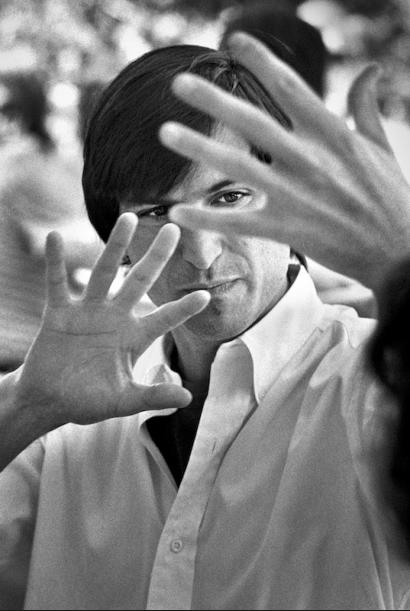
Steve Jobs Explaining Ten Year Technology Development Cycles. Sonoma, California, 1986.
Steve giving a history lesson about how technology evolves in ten year wave cycles to his new NeXT team at an off-site meeting.
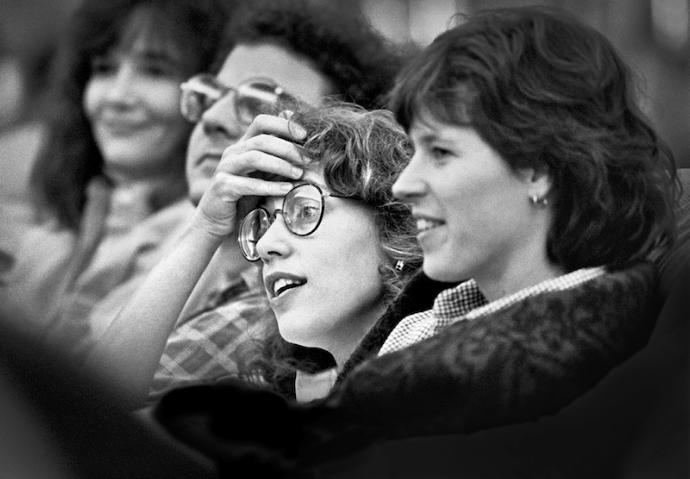
Susan Kare Is Part of Your Daily Life. Sonoma, California, 1987.
Susan Kare’s playful icons and user interface design have impacted the daily lives of hundreds of millions of people around
the world. Susan was part of the original Mac team and designed the original Mac icons and much of the user interface.
Leaving Apple with Steve after his ouster, she became a cofounder and creative director at NeXT Computer, where she
oversaw the creation of its icons and logo, working with the legendary Paul Rand. Later she designed or redesigned icons for
many other computer operating systems, including Windows and IBM’s OS/2. Here she’s listening to Steve at an off-site
meeting with her colleague Kim.
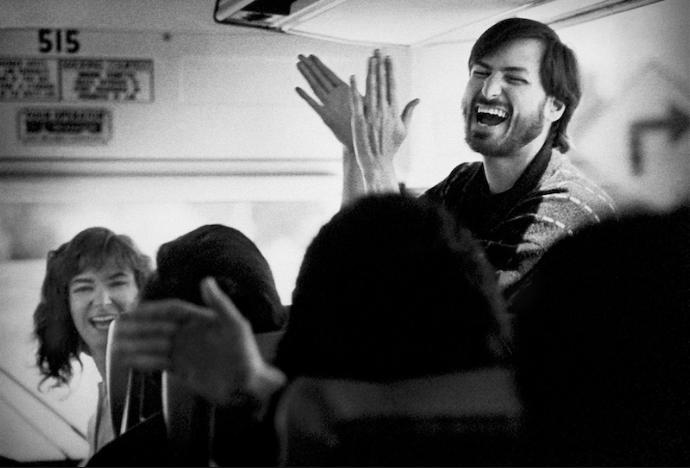
Steve Jobs Returning from a Visit to the New Factory. Fremont, California, 1987.
Although Steve could be extremely rude, critical, and occasionally even vindictive, he also was incredibly joyful, with an
infectious grin and energy that was irresistible. In the early days at NeXT he would often come bounding in, hungry to get to
work. Still, there were not too many unrestrained moments of hilarity such as this one, when Steve was riding back from a visit
to the newly chosen factory site with the company employees in an old, rented yellow school bus.
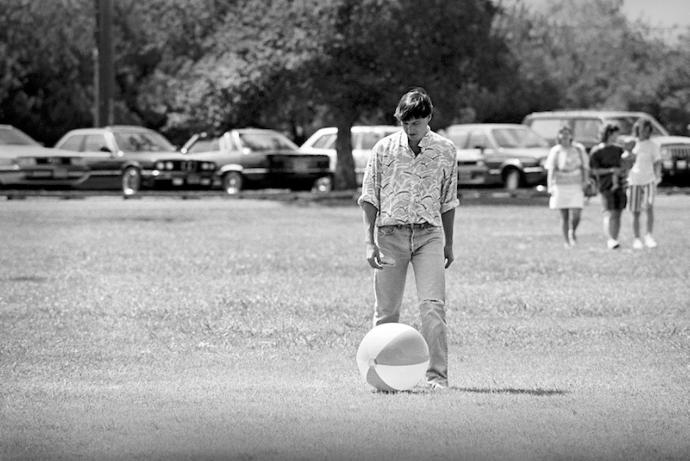
Steve Jobs Pretending to Be Human. Menlo Park, California, 1987.
Steve was not the kind of guy who ever seemed to relax. He was usually focused like a laser on the task at hand. So it was
surprising to see Steve kicking this beach ball around at a company picnic. He seemed to be having a good time, but it felt
more like a performance designed to encourage the team to relax. He knew well from previous experience that his team
needed breaks in order to sustain the forced march that would culminate in shipping the product.
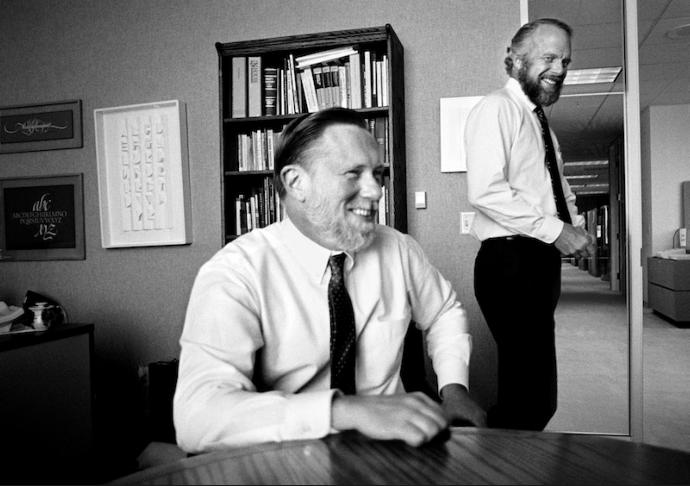
The Founders of Adobe Systems Preparing to Release Photoshop. Mountain View, California, 1988.
John Warnock and Chuck Geschke (seated at left) confidently ready the launch of Photoshop, a landmark program that would
utterly transform photography and the graphic arts. This followed their first breakthrough software called PostScript, completed
after twenty thousand man hours of coding, which allowed personal computers to talk to printers. This seemingly small function
was incredibly difficult to achieve and represented the biggest advance in printing since Gutenberg invented movable type in
1436. The duo left Xerox PARC (Palo Alto Research Center) after their brilliant ideas were ignored and founded Adobe in 1982
with $2 million. They read exactly one business book prior to starting Adobe and intended to sell a personal desktop computer
with a printer. They did not initially envision revolutionizing the desktop publishing industry with fonts or design software. A few
months after they opened for business, Steve Jobs showed up (1982, riding high in his first stint as CEO at Apple) and
demanded to buy the company. His then in development Macintosh was going to ship with a laser printer, but his team could not
write the requisite software. Steve pressed them to sell and come work for him. As Chuck told the story, they refused, and Steve
responded, “You guys are idiots!” They called their investors, who urged them to work something out with Steve. They agreed to
sell him shares worth 19 percent of the company, for which Steve paid a five times multiple of their company’s valuation at the
time, plus a five year license fee for PostScript, in advance. This made Adobe the first company in the history of Silicon Valley to
become profitable in its first year.
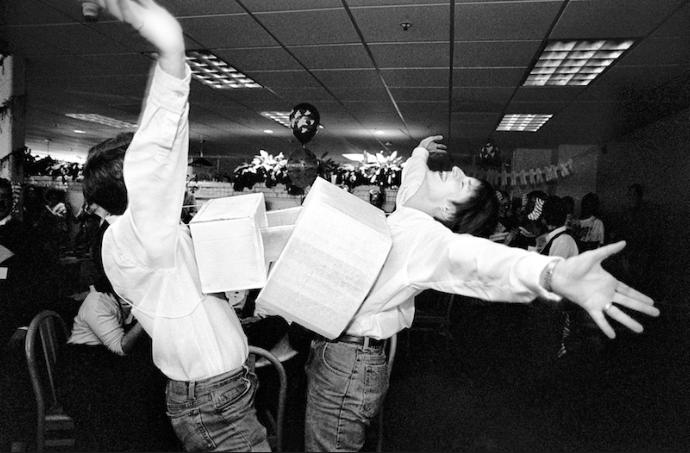
Geek Sex. Mountain View, California, 1991.
Real-life boyfriend and girlfriend act out a rudimentary electrical metaphor at an Adobe Halloween party. Technology workers
were notoriously socially inept and often shy, especially male engineers. Fantasy games and role playing were popular, and
any opportunity to dress in costumes was welcomed. This couple repeated the ritual all over the company to the delight of
fellow workers.
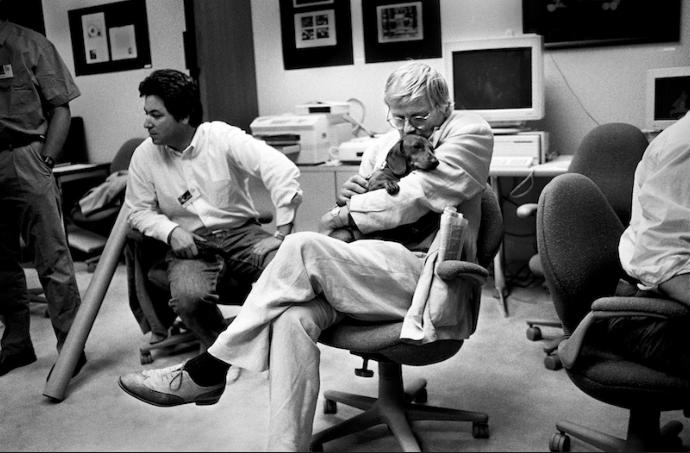
The Painter David Hockney Rests during the First Photoshop Invitational. Mountain View, California, 1990.
As digital technology grew more powerful, Silicon Valley became an unexpected crossroads of culture. Artists arrived from all
over the world, eager to experiment and hang out at happenings such as the TED conference, creating a freeway and office
park version of what Paris in the twenties must have felt like. Producer Quincy Jones and musicians Peter Gabriel and Herbie
Hancock were early adopters. Graham Nash was so taken he started his own fine art digital printing business. Tom Wolfe had
been out to write about Bob Noyce, the coinventor of the integrated circuit, and lots of writers followed, including Steve Jobs’s
half sister Mona Simpson. George Lucas was a pioneer in digital film, as was Francis Ford Coppola. The cultural ground was
shifting, with the avantgarde gathering to push new digital ideas into the zeitgeist. Here, painter David Hockney, holding one
of his beloved dachshunds, attends Russell Brown’s first Adobe Photoshop Invitational, where he learned how to use the first
release version of Photoshop, happily smoking in the computer room and playing with his dogs on breaks.
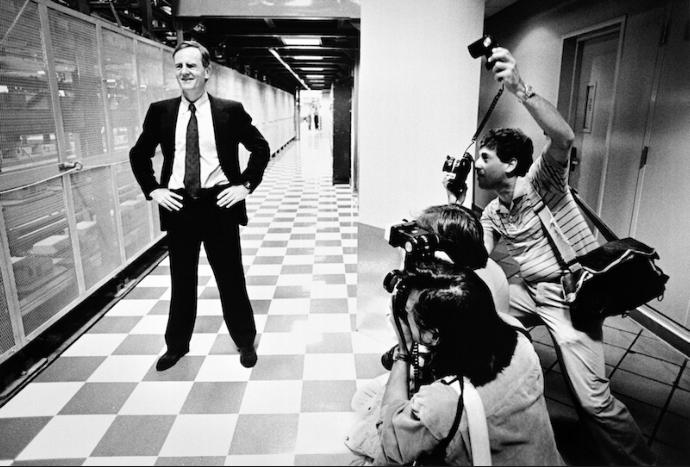
John Sculley Masters His Shyness to Meet the Press. Fremont, California, 1990.
At the factory in Fremont, Apple CEO John Sculley charms the press. He overcame severe shyness and a stutter to eventually
become CEO of Pepsi and was then convinced by Steve Jobs to join Apple in 1983. After Apple’s board forced Steve out, John
grew Apple from $800 million to $8 billion a year in revenue. Despite this incredible achievement, he was often incorrectly
dismissed in the Valley as the man who fired Steve, and for being a marketing guy, not an engineer. In fact, he worked hard to
find and encourage the best ideas inside the company, such as the Knowledge Navigator, which in 1987 anticipated many
aspects of today’s internet, software agents, and the potential of tablet and voice-command technology. And John’s solution to
provide a new revenue stream alongside the Macintosh was to green-light a rebel unit to develop the world’s first personal
digital assistant, or PDA. The Newton, as it was called, would be a new type of product for a market that did not yet exist. It was
an ambitious gamble. Although the Newton ultimately failed, it validated John’s vision for leading to billions of smart devices
and paved the way for Palm Pilot, then iPhone and iPad. Ironically, he was fired in 1993 for refusing to license the Mac OS but
he left Apple as the most profitable computer company in the world with billions in the bank.
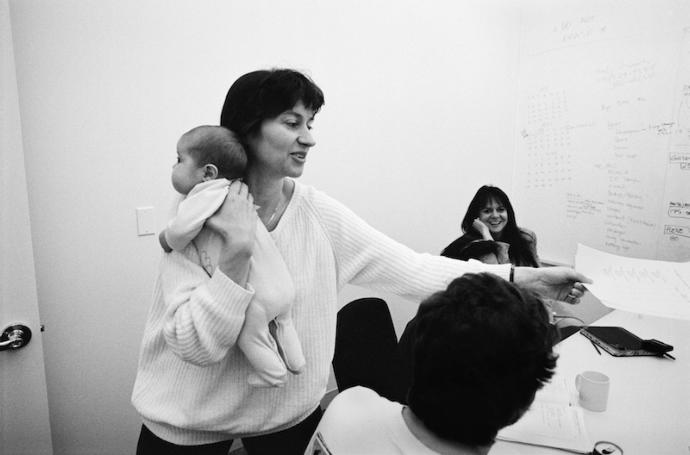
The Newton War Room at Apple Computer. Cupertino, California, 1993.
Apple programmer Sarah Clark kept her newborn baby with her at work, almost never leaving the building for two years as the
team rushed to finish the software. She pulled curtains over her office so colleagues knew when it was naptime or if she was
breast-feeding. Her dedication was typical of Apple employees, and management was generally grateful. Flexible hours and
other worker friendly modifications were adopted, and John Sculley showed leadership by appointing women to positions of
power, unusual in Silicon Valley at that time. What’s not often considered is that whoever writes the code determines how the
machine will behave and interact with the user.
The implications of this are not often discussed. What if someone other than a 20-something white male geek wrote the code?
A different worldview would likely change the priorities of the code writer, and that would likely change the nature of the
technology that is so profoundly shaping our behavior and culture.
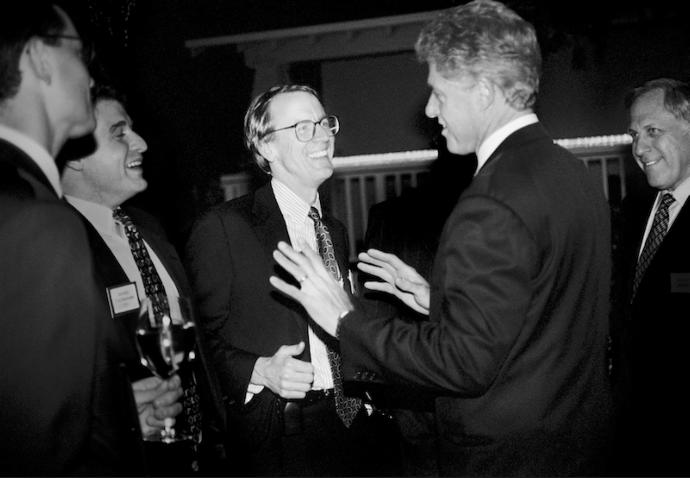
President Clinton Is Really Smart. Mountain View, California, 1995.
During his reelection campaign, President Bill Clinton attended a fund-raiser thrown by the top CEOs of Silicon Valley. L. John
Doerr (center), interacting with Clinton, helped organize the visit at the home of Regis McKenna. During dinner, the CEOs
peppered Clinton with questions related to complex technology, trade, and economic issues. Listening patiently, the president
smoothly delivered a point-by-point response to each guest in turn, revealing a jaw-dropping breadth of knowledge about all
the issues, even obscure aspects of encryption technology. Everyone pulled out his checkbook and donated generously to the
campaign.
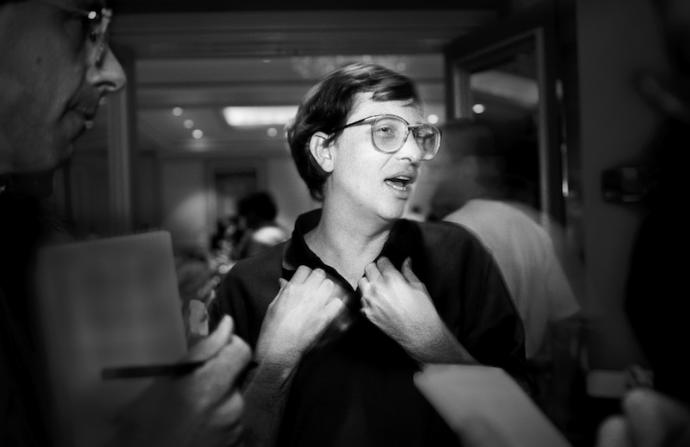
Bill Gates Says No One Should Ever Pay More Than $50 for a Photograph. Laguna Niguel, California, 1992.
Microsoft CEO Bill Gates discusses cheap content for the masses and debates with reporters about the long-delayed
vaporware upgrade to Windows at the Agenda ’92 Conference, hosted by the elegantly acerbic Stuart Alsop. Alsop showed
Gates no mercy during an interview onstage, grilling him on why Windows was so late. Later that year, at the third influential
TED conference, Gates was onstage making a presentation about digital content and the cost of photography, saying, “No one
should ever pay more than fifty bucks for a photograph.” As Gates explained, he was completing construction of his high tech
house in Seattle, whose interiors would feature screens with continuously changing displays of images. Licensing images on
the scale he envisioned would be expensive, so he began to think about how to own or control vast archives of images. This
led to the idea of forming a stock photography business originally called Continuum, tasked with developing large image
libraries for online distribution. Later, not long after initial bad press from the photography trade publications the name was
changed to Corbis.
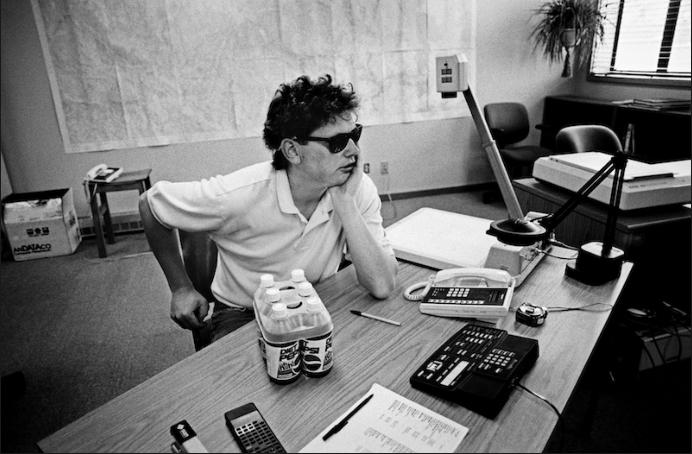
Bill Joy Is Worried about the Future of the Human Race. Aspen, Colorado, 1998.
Legendary programmer and co-founder of Sun Microsystems, Bill Joy, wrote Berkeley Unix while a student at UC Berkeley and
helped the US Defense Department with the TCP/IP stack code that allowed email to travel along the path of least resistance in
case of nuclear attack. He then cofounded Sun Microsystems, became a billionaire, husband, and father, and patron of the arts.
He also championed and helped finish the code for Java, perhaps Sun Microsystems’ most important legacy. Bill now believes
unfettered innovation for its own sake endangers the very existence of the human race. In 2000, Bill published a manifesto in
Wired magazine that stunned the technology world by challenging the accepted wisdom of unrestrained development.
Triggered in part by meeting noted scientist Ray Kurzweil and hearing his ideas about the Singularity, when computers gain
consciousness and we will upload our brains into a hive mind, Bill began forming his thesis. He warned that without thoughtful
controls the convergence of our most powerful twenty-first-century technologies—robotics, supercomputers, nanotechnology,
and genetic engineering might destroy the human race. For the last decade, Bill has been on a global hunt for scalable green
technology solutions to climate change.
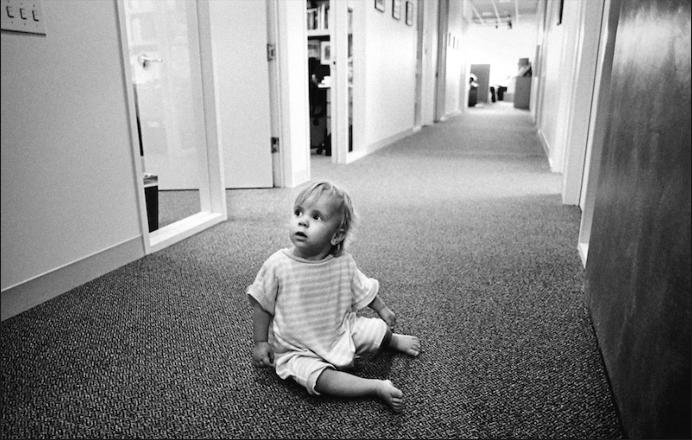
An Infant at Apple. Cupertino, California, 1993.
As the Newton team worked even more hours, including almost every weekend, they began to bring wives, husbands, and
children into the Apple offices. That way kids could see their parents in daylight hours. Today, Apple employees still work very
long hours, particularly when new products are being readied for market.
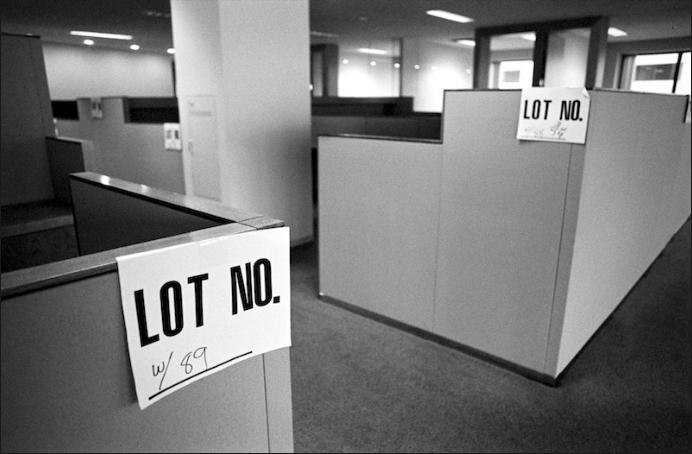
End of the Dream. Silicon Valley, 2000.
Everything rising up will eventually falter and sink, that’s the natural cycle of life. Knowing that things were bound to end was a
constant worry and discussion point in Silicon Valley, but few noticed the exact moment when things began to unravel. The dot-
com bubble collapse was such a slow-motion disaster at first, unfolding hesitantly through late 1999 into 2000, then accelerating
with neck-snapping g-force as it spread from local VC’s to Wall Street to the big retirement funds and mom and pop investors.
By 2001, trillions of dollars of shareholder value had washed away. It felt as though a toxic cloud had descended and hung over
us all in the Bay Area, suffocating jobs and dreams. But soon Web 2.0 would boot up, bringing along Google, Facebook, Twitter
and others to disrupt and burn new pathways, luring yet another generation to the Valley to build apps, invent and text their
friends. The dream was too powerful to die. While the hangover from the dot-com crash lingers, making investors shy of funding
big-bet change-the-world ideas, the new kids are poking their heads up and looking around for something cool and perhaps
more meaningful than short-term apps. And smart people in the Valley are all saying that a new wave of innovation is coming
that will make the digital revolution pale by comparison. To catch that next wave and make great things, innovators will no doubt
have to be as passionate, hungry and willing to sacrifice everything as those whose work is documented in these pages. Since
the beginning, the pathfinders of Silicon Valley have always found that success was gained through bitter struggle. They also
discovered meaning in their lives, and changed ours, through their quests to invent the impossible. Thus it will ever be.






